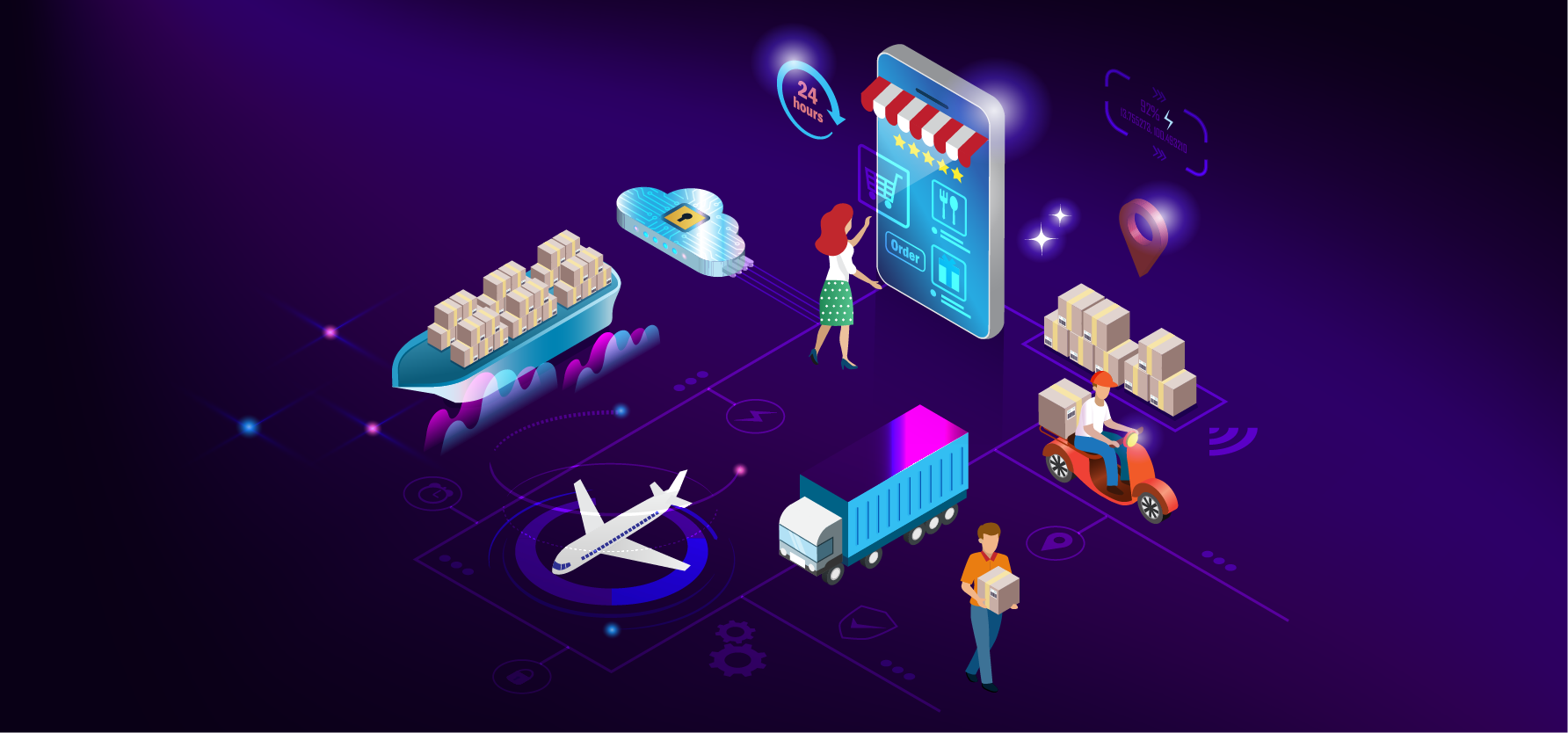
AI and machine learning have transformed industries by boosting labour productivity by up to 37% and helping companies respond to customers and competitors up to 50% faster. But did you know these technologies can also help businesses avoid common IoT deployment mistakes and tackle enterprise IoT challenges head-on?
With AI/ML, companies can spot common IoT implementation errors, reduce IoT project failures, and address IoT security mistakes in enterprises before they become costly problems.
This blog will explore why IoT deployments fail, how AI/ML can turn these failures into opportunities, and highlight the best IoT solutions for enterprises. You’ll learn how AI/ML powers better, faster business decision-making by processing huge amounts of data, predicting trends, and automating routine tasks.
This blog will give you practical ways to integrate AI/ML, overcome enterprise IoT challenges, and drive smarter decisions for your business.
Common IoT implementation errors can derail even the most promising business initiatives. It can lead to poor decision-making and costly IoT project failures. It is essential to identify these pitfalls. It is the first step towards overcoming enterprise IoT challenges.
One of the most frequent IoT deployment mistakes is jumping in without a solid strategy or clear business objectives. Many organizations adopt IoT because it’s trending, not because it solves a specific business problem. Without a defined business case, projects lack direction, fail to align with business goals, and often stall after initial pilots. This misalignment can make it hard to measure ROI and get buy-in from leadership, increasing the risk of IoT project failures.
Mistakes in IoT security within enterprises can have serious consequences. Failing to prioritize security from the beginning exposes businesses to data breaches, operational disruptions, and reputational harm. Many IoT devices are vulnerable entry points, making robust security measures essential from day one.
IoT projects are rarely standalone. They require seamless integration with existing systems, networks, and processes. Underestimating this complexity can result in delays, cost overruns, and technical issues. Interoperability problems, especially with devices from different vendors, can create data silos and hinder the flow of valuable information, which impacts business decisions.
Selecting technology or vendors based solely on cost, without considering long-term compatibility, scalability, and support, is a common IoT implementation error. This can lead to performance issues, a lack of interoperability, and vendor lock-in, making future upgrades or expansions difficult. Careful evaluation and prioritizing open standards are key to avoiding these mistakes.
Many IoT deployments are designed for small-scale pilots and fail to plan for growth. As the number of devices and data volumes increases, systems that aren’t built for scalability can collapse, leading to operational headaches and increased costs. Ongoing maintenance, regular updates, and remote management capabilities must be considered from the start.
IoT generates huge amounts of data, but if this data is inaccurate or poorly managed, it leads to flawed insights and bad business decisions. Effective data governance and quality controls are crucial for maximizing the value of IoT investments.
By understanding why IoT deployments fail and addressing these common errors, enterprises can overcome IoT deployment mistakes and move toward data-driven, scalable, and secure solutions that truly support better business decision-making.
IoT deployments fail for many reasons, often because of a mix of technical, organizational, and strategic challenges. Understanding these issues is key to avoiding common IoT deployment mistakes and setting up AI/ML projects for success. Let’s break down where things go wrong and what lessons we can take for AI and machine learning adoption.
To avoid these IoT deployment mistakes and set up the best IoT solutions for enterprises, focus on data quality, clear business cases, building expertise, supporting change management, investing in infrastructure, fostering collaboration, and using an iterative approach. These lessons will help both IoT and AI/ML projects deliver real business value.
Companies worldwide are riding the next wave of technological transformation, and AI/ML is at the heart of this shift. From boosting productivity with machine learning to transforming customer service with intelligent virtual agents, standout companies are using AI to tackle enterprise IoT challenges and avoid common IoT deployment mistakes. 80% of organizations that have implemented AI in customer experience report a significant improvement in customer satisfaction (Gartner, 2024).
But why do IoT deployments fail so often? The answer lies in a mix of technical, organizational, and strategic missteps. Let’s explore how AI/ML can help avoid these pitfalls and deliver the best IoT solutions for enterprises.
One common IoT implementation error is treating AI as just another tool, rather than a transformative force. For example, in contact centers, adding conversational IVAs (Intelligent Virtual Agents) creates a digital workforce that works alongside human agents. This not only streamlines operations but also frees up employees to focus on higher-value tasks. When AI handles routine calls, live agents can shift to proactive outreach, turning a traditional support center into a revenue generator.
It’s easy to get caught up in the excitement of AI, but successful adoption requires clear goals and measurable outcomes. Whether it’s reducing call handle time or improving first-call resolution, businesses must track the right metrics and demand proof of ROI from vendors. Remember, AI alone doesn’t guarantee better customer experiences. Its impact must be measured at every stage.
AI is powerful, but it isn’t perfect. The best IoT solutions for enterprises use collaborative intelligence, combining AI’s speed and scale with human oversight. For instance, AI can generate call summaries, but human agents should review them for accuracy. This approach helps avoid IoT project failures and ensures continuous learning and improvement.
Transparency is key when implementing AI. Employees and customers need to understand that AI is there to assist, not replace. Involving them in the process, addressing concerns, and collecting feedback helps build trust and smooths the transition to new workflows.
Not all AI is created equal. Choose solutions that offer flexibility, easy integration, and the ability to switch vendors as technology evolves. This adaptability is crucial for overcoming IoT security mistakes in enterprises and scaling as your needs grow.
By leveraging AI/ML insights and focusing on collaboration, transparency, and flexibility, businesses can avoid common IoT deployment mistakes and unlock the full potential of IoT and AI for smarter, more reliable decision-making.
AI and machine learning (ML) are changing the game for IoT projects. By combining IoT’s ability to collect massive amounts of data with AI’s analytical power, businesses can avoid common IoT deployment mistakes and overcome enterprise IoT challenges that often lead to project failures. Let’s see how AI/ML can help reduce IoT project failures and deliver the best IoT solutions for enterprises.
One of the most common IoT implementation errors is waiting until something breaks before fixing it. AI/ML flips this approach by using real-time data analysis and predictive analytics:
Anomaly Detection: AI algorithms constantly monitor equipment performance, flagging unusual patterns that could signal a problem. This allows businesses to address issues before they escalate.
Failure Prediction: Machine learning models can predict when and where equipment failures are likely to happen, enabling proactive repairs and reducing unexpected downtime.
Optimized Maintenance Schedules: AI can analyze usage and performance data to recommend the best times for maintenance, preventing both over-servicing and missed repairs, which extends equipment lifespan and saves money.
AI/ML helps businesses optimize processes and manage resources more effectively, directly addressing why IoT deployments fail due to inefficiency:
Process Optimization: AI analyzes real-time IoT data to spot inefficiencies and suggest adjustments, improving productivity and reducing waste.
Resource Management: By predicting resource consumption, AI helps allocate resources more efficiently, cutting unnecessary costs.
Energy Consumption: AI can identify patterns in energy use and recommend changes to lower consumption, leading to significant cost savings.
IoT security mistakes in enterprises can be costly, but AI/ML strengthens security in several ways:
Real-time Threat Detection: Edge AI processes data locally, catching threats as they emerge and stopping them from spreading.
Automated Threat Response: ML algorithms can automate responses to security threats, reducing the risk of data breaches and minimizing human error.
AI/ML turns raw IoT data into actionable insights, helping businesses avoid IoT project failures caused by poor decision-making:
Predictive Analytics: ML models analyze historical data to forecast future events, helping leaders make smarter decisions.
Improved Decision-Making: With clear insights into performance, efficiency, and risks, businesses are empowered to make informed, data-driven choices.
In short, integrating AI/ML into IoT projects helps reduce downtime, cut costs, boost efficiency, enhance security, and support better business decisions, key ingredients for successful IoT deployments.
Security is often the Achilles’ heel of IoT projects, and IoT security mistakes in enterprises are a leading cause of IoT project failures. As businesses deploy more connected devices, the risks grow, making it crucial to address these challenges head-on. AI and machine learning (AI/ML) are now at the forefront of the best IoT solutions for enterprises, helping to tackle common IoT implementation errors and reduce IoT deployment mistakes.
AI/ML algorithms excel at learning what “normal” looks like for IoT devices and networks. They can instantly spot unusual behavior, such as a device sending data to a suspicious destination or a sudden spike in network traffic. This real-time anomaly detection is a game-changer for identifying threats before they escalate, directly addressing why IoT deployments fail due to undetected breaches.
Traditional security systems often struggle to keep up with new threats. Machine learning can be trained on known malware signatures and attack patterns, improving signature-based detection and making it more effective against evolving threats. AI-powered intrusion detection and prevention systems (IDS/IPS) can monitor network activity and block malicious traffic in real time, reducing the risk of IoT project failures caused by undetected attacks.
One of the most common IoT deployment mistakes is failing to identify vulnerabilities before attackers do. AI can scan IoT devices, applications, and firmware for weaknesses, helping businesses fix issues before they are exploited. Predictive maintenance, powered by AI, analyzes historical data to forecast potential device failures or security vulnerabilities, enabling proactive interventions that keep systems safe and operational.
AI can boost authentication by analyzing user behavior, flagging unusual login attempts or suspicious access patterns. Multi-factor authentication, powered by AI, adds another layer of defense. Combining multiple AI models creates a multi-layered security approach, making it much harder for attackers to slip through the cracks.
Zero-trust models, supported by AI, ensure that every user and device is continuously verified and authenticated. This approach minimizes insider threats and unauthorized access. AI-specific threat intelligence feeds keep security measures updated and responsive to new attack methods.
AI can automate the regular rotation of encryption keys, protecting sensitive data both in transit and at rest. It can reduce the risk of key compromise.
By leveraging AI/ML, enterprises can address the most pressing IoT security mistakes, overcome enterprise IoT challenges, and build resilient, secure systems that support long-term business success.
The best IoT solutions for enterprises are those that turn data into action. Today, advanced platforms and services help businesses tackle enterprise IoT challenges and avoid common IoT deployment mistakes. These platforms connect, manage, and analyse IoT data for predictive maintenance, real-time analytics, and help in smarter decision-making.
AI/ML-powered platforms are designed to handle the massive amounts of data generated by IoT devices. They help businesses spot trends, identify risks, and make decisions based on real evidence. This process reduces the chance of IoT project failures.
Edge computing solutions bring AI models directly to IoT devices, enabling real-time processing and faster responses. This is crucial for industries where every second counts and helps prevent IoT deployment mistakes linked to slow data analysis.
Predictive maintenance powered by AI enables businesses to predict equipment failures before they happen. It can optimize maintenance schedules and avoid costly downtime, which is a common reason why IoT deployments fail.
Real-time analytics let companies monitor operations as they happen. It helps in identifying quickly and making timely decisions. This is especially useful for smart factories, smart cities, agriculture, healthcare, and retail.
AI/ML-driven IoT solutions also help with data-driven decision-making by analyzing historical data to predict trends and support strategic choices. In agriculture, these solutions optimize irrigation; in healthcare, they detect early health issues; and in retail, they improve inventory and customer experience.
AI/ML-driven IoT solutions have various benefits. It reduces operational costs, improves decision-making, enhances customer experience, increases efficiency, and enables faster innovation. By choosing the right AI/ML-powered IoT solutions, enterprises can overcome IoT security mistakes in enterprises, avoid common IoT implementation errors, and exploit the full potential of their data.
Integrating AI and machine learning with IoT is opening up new opportunities for enterprises to overcome challenges and utilize real business value. At Telepathy, we see this integration as a game-changer for industries looking to make smarter, faster decisions and improve operations.
AI algorithms can process the vast data collected by IoT devices to deliver actionable insights. For example, in manufacturing, AI can predict equipment failures before they happen, reducing downtime and maintenance costs. This helps businesses avoid common IoT deployment mistakes and supports more strategic decision-making.
The combination of AI and IoT enables automated responses to changing conditions. In smart homes, AI learns residents’ behaviours to adjust lighting, heating, and security systems. This technology improves comfort and saves energy. This level of automation can be applied across industries to streamline operations and reduce manual work.
AI analyzes IoT data to create personalized experiences. In retail, this could mean tailored product recommendations based on a customer’s preferences and buying history, helping businesses stand out and improve customer satisfaction.
Industries like transportation and utilities benefit from AI-driven predictive maintenance. It can foresee equipment issues and minimize costly downtime. This proactive approach reduces IoT project failures and keeps operations running smoothly.
AI strengthens IoT security by identifying unusual patterns and potential threats. It addresses IoT security mistakes in enterprises and ensures connected devices remain secure.
The top tech trends for 2024 include AI and machine learning, cloud computing, cybersecurity, 5G connectivity, IoT, blockchain, sustainability, and extended reality (XR). Among these, the integration of AI/ML with IoT is reshaping how businesses operate and make smarter decisions.
AI and ML can automate routine tasks, provide predictive analytics, enhance decision-making, and create personalized customer experiences. This leads to increased efficiency and faster innovation. According to MarketsandMarkets, the global AI market is expected to grow from $86.9 billion in 2022 to $407.5 billion by 2027, showing the rapid adoption of these technologies.
IoT is also expanding rapidly. Statista reports that the number of connected IoT devices will reach 18.8 billion by the end of 2024 and is projected to grow to over 40 billion by 2030. The combination of AI and IoT, often called AIoT, is driving growth in industries like manufacturing, healthcare, and smart cities by enabling real-time data analysis and automation.
Fortune Business Insights predicts the IoT market will reach $253.86 billion by 2023, becoming a major product industry on its own. McKinsey Global Institute estimates that IoT could generate an annual economic impact between $3.9 trillion and $11.1 trillion by 2025, thanks to improved system performance and cost reductions.
Companies that embrace this integration will be better positioned to innovate, cut costs, and deliver superior customer experiences. This technology can pave way for smarter business decisions in the years ahead.
AI and ML are transforming how businesses tackle IoT deployment mistakes, enterprise IoT challenges, and common IoT implementation errors. Companies reduce IoT project failures and address IoT security mistakes in enterprises by focusing on real business needs and using data-driven insights. The best IoT solutions for enterprises are those that support smarter decision-making and long-term growth. It is important to choose the right approach and a partner to avoid why IoT deployments fail. At Telepathy, we help organizations take advantage of the power of AI, ML, and IoT to achieve better results and stay ahead in today’s market.
Technical Content Writer
Mooskaan is a proficient writer specializing in the IT industry. She can simplify complex topics in software development and digital marketing for diverse audiences. Her exceptional writing, editing and proofreading abilities ensure high quality content across blogs, web pages, and technical guides, enhancing communication, marketing and user engagement.



